HP Z6 G5 A Workstation Review: 96-Core AMD Ryzen Threadripper Pro 7995WX Impresses
by Gavin Bonshor on December 13, 2023 9:40 AM ESTHP Z6 G5 A /w Threadripper 7995WX: Performance
To analyze the performance of the HP Z6 G5 A with AMD's Threadripper Pro 7995WX 96C/192T processor, we've opted for a more cut-down version of our CPU 2024 benchmark suite. This is for two main reasons. The first reason is the HP Z6 G5 A is a workstation and, as such, is more designed for virtual production, rendering, AI and machine learning workloads. It's unlikely a user buying an expensive top-of-the-range workstation will care about performance in Microsoft Office, etc. The second reason is closely associated with the first, rendering performance and relevant tests from our suite have been selected for the types of workloads that are likely to be run on a machine such as a workstation.
For comparison reasons, we are comparing the Threadripper Pro 7995WX against processors of a similar ilk, such as the Ryzen Threadripper 7000 series chips, including the 7980X (64C/128T) and 7970X (32C/64T). The other processor that is a direct competitor to AMD's Ryzen Threadripper Pro (and Non-Pro) series is the Intel Sapphire Rapids Xeon W9-3495X (56C/112T), which, as previously mentioned, is AMD's direct competitor by default.
We are using DDR5-5200 RDIMM memory on the Ryzen Threadripper Pro 7995WX, as per supplied by HP within the Z6 G5 A workstation. We also tested the Ryzen Threadripper 7980X and 7970X as per JEDEC specifications at DDR5-5200. For Intel's Xeon W9-3495X, we are using DDR5-4800 RDIMM memory as per Intel's JEDEC specifications. It should be noted that both platforms are run with their full allocation of memory channels, e.g., TR 7000 Pro in 8-channel along Intel's Xeon W9-3495X Sapphire Rapids chip in 8-channel, while TR 7000 (Non-pro) is running with 4-channel memory.
Below are the settings we have used for each platform:
- DDR5-5200 RDIMM - AMD Threadripper Pro 7000
- DDR5-5200 RDIMM - AMD Threadripper 7000
- DDR5-4800 RDIMM - Intel Xeon Sapphire Rapids WS
Rendering
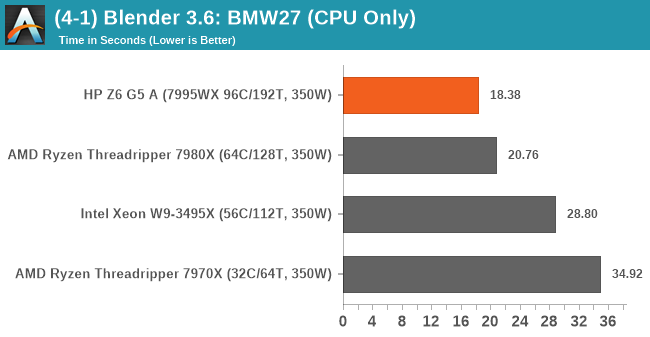
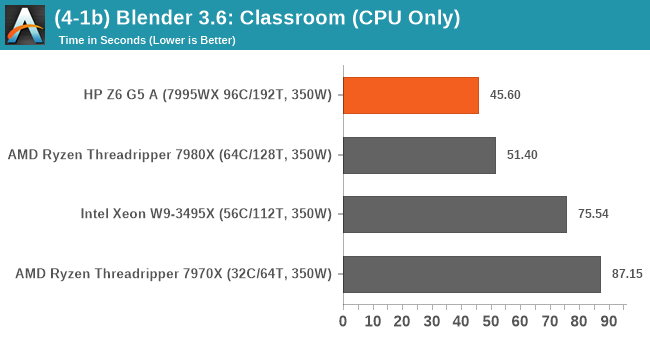
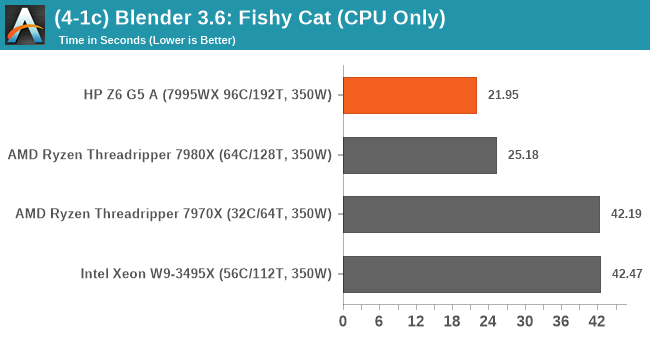
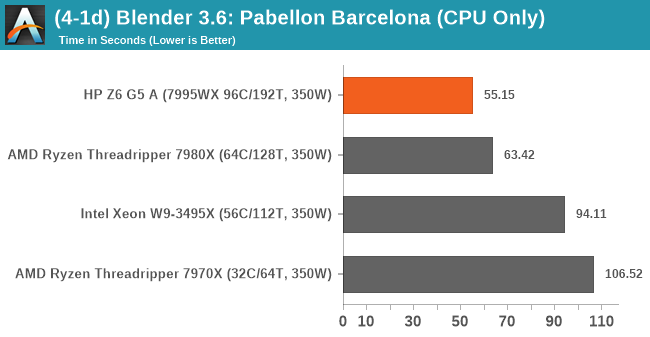
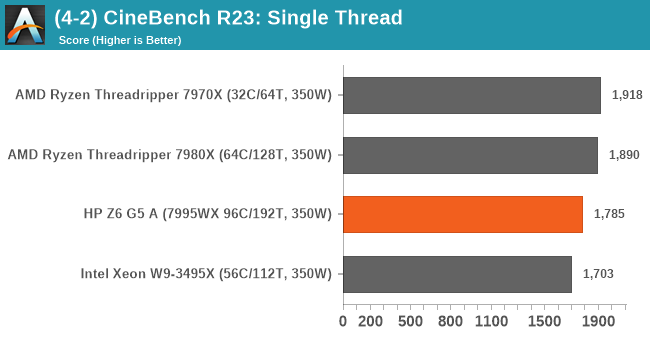
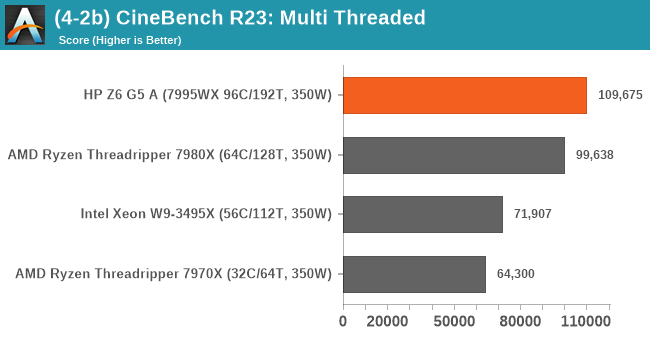
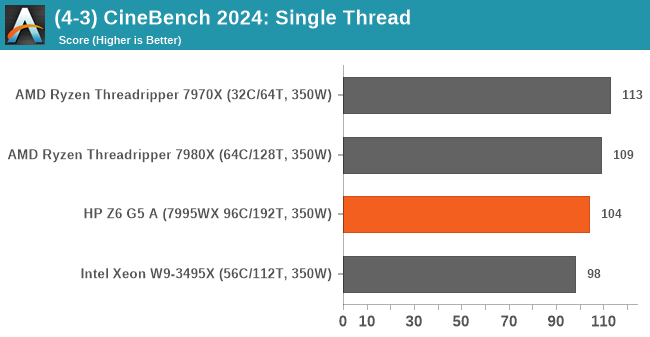

In rendering performance, specifically in multi-threaded tests, the Ryzen Threadripper Pro 7995WX has a distinct advantage over the rest of the field, mostly due to having more cores/threads available. While there is an advantage, the advantage on offer aren't linear, and in CineBench 2024 MT, we can see an increase of around 6%. In CineBench R23 MT, this stretches to just 10% more, and given the 7995WX has 32 more cores than the 7980X, we can clearly see the performance isn't linear.
Despite the core count difference, both chips have a 350W TDP, and this seems to be playing a big part in these results. With 50% more cores than the 7980X, the 7995WX would likely prefer to have 50% more power as well, to unlock its fullest potential.
Science and Simulation
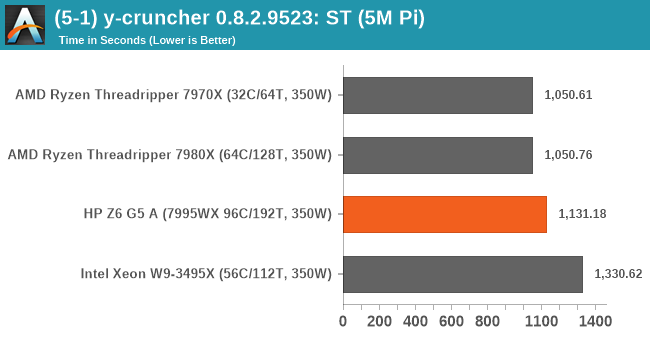
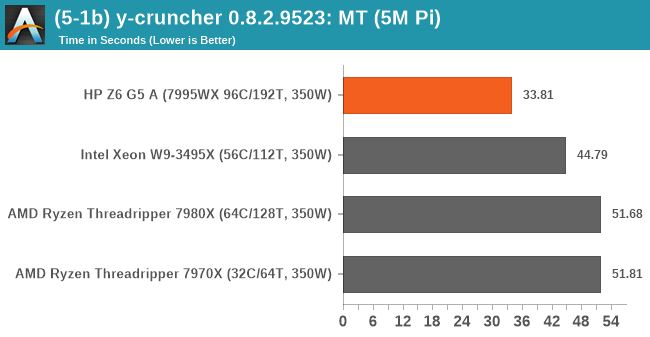


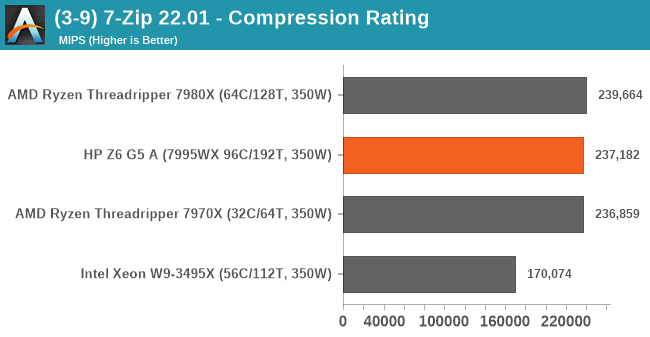
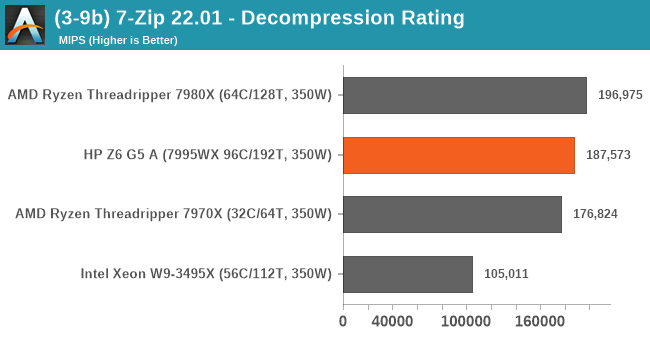

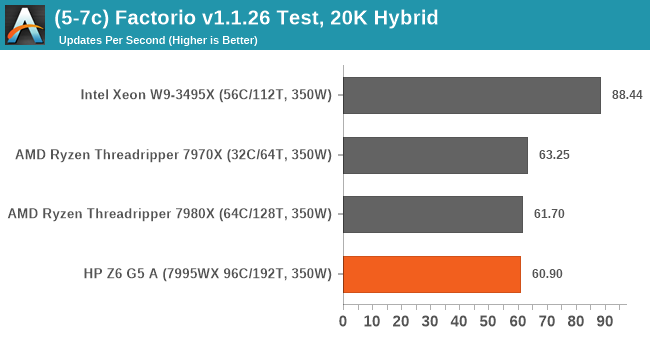
We saw similar levels of performance between the Ryzen Threadripper Pro 7995WX (96C/192T) and the 7980X (64C/128T) in much of the benchmarks above, but the 7995WX did perform very well in y-Cruncher, where we saw 32% faster performance in the multi-threaded test. Single-threaded performance is limited due to having a slower base frequency than the other Threadripper 7000 chips tested. However, the Intel Xeon W9-3495X has the slowest of all the chips tested and, as such, sits at the bottom of the single-threaded performance rankings.
Encoding
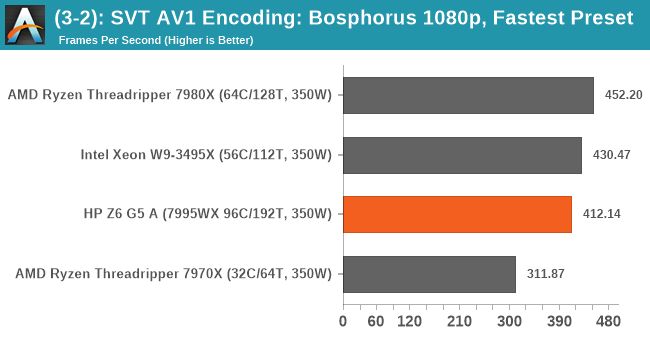
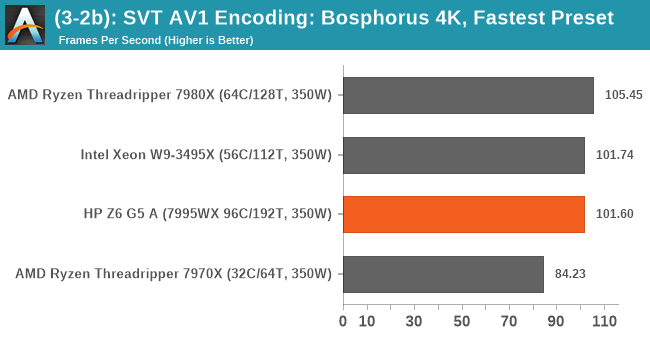
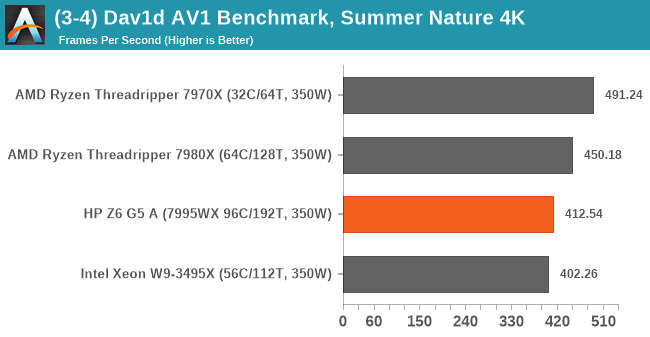
In our short-form encoding suite, we can see having more cores doesn't necessarily mean more performance, and encoding is one situation where having a strong balance between core/thread count, speed, and optimizations counts for more. In AV1 performance, AMD's Zen 4 core seems to have the advantage, whereas in HEVC CPU encoding, Intel's Xeon W9-3495X has a distinct advantage.










23 Comments
View All Comments
yankeeDDL - Wednesday, December 13, 2023 - link
So the Xeon is almost 2x slower at almost 2x power.It's amazing how far behind Intel has fallen.
TEAMSWITCHER - Wednesday, December 13, 2023 - link
If only people were still doing workstation rendering on CPU's....TheinsanegamerN - Wednesday, December 13, 2023 - link
If only people did things other then rendering on CPUs.schujj07 - Thursday, December 14, 2023 - link
You mean rendering or editing programs like Adobe Premiere? Premiere is still mainly CPU bound.xenol - Monday, December 18, 2023 - link
Only peak power is reported, which can exaggerate how much power Intel chips use since they have a higher power level over the TDP. They should've reported average power from a sample of workloads. Having how long each test ran would also be good to derive average energy usage.In addition, Intel's a process node behind TSMC.
Rοb - Wednesday, December 13, 2023 - link
> "We have been informed that the configuration we've reviewed today costs around $19,849.".Using the link you provided, choosing the base configuration and only changing the processor, the price is U$25,672.00.
Bare bones, with 16 cores, start around 5K.
Greg13 - Wednesday, December 13, 2023 - link
Many thanks for the review. I'm surprised you ran it with such little ram though. 128GB for 96 cores. That's barely more than 1GB per core. The workloads I'd be looking to use this on would be needing 8GB per core at least. It makes me wonder if the performance was somewhat limited by insufficient ram capacity? If these benchmarks aren't limited by such limited ram capacity, then I also think that you should look to get some new workstation benchmarks that are more memory intensive? We never seem to see the benefits of more memory channels in the benchmarks you use, which always surprises me.PeachNCream - Friday, December 15, 2023 - link
That's actually typical scaling with higher core count workstations. While the raw RAM quantity is higher than the average home PC, the per-core quantity is a lot lower as is the per-core memory bandwidth based on lots o' CPUs and not so many memory channels.Greg13 - Saturday, December 16, 2023 - link
Up until this generation with the 96-core part, Threadripper Pro has always matched the top desktop part in terms of memory channels per core. In terms of memory capacity per core, they far exceed standard desktop parts as they can have up to 2TB of RDIMM's. Which is several times more memory capacity per core than the desktop parts. However this review has chosen to review the processor with 1/20th of its maximum memory capacity which just seems odd to me and suggests that they are not testing it in its intended workload and/or limiting its performance compared to the lower core count processors which they've given the same amount of total ram.PeachNCream - Sunday, December 17, 2023 - link
To be fair, that's probably a decision at HP and not Anandtech. Anandtech hasn't purchased hardware for review in ages and is beholden to test whatever is sent to them (probably distributed by Future between AT and Tom's or shipped direct to AT - just guess on the distribution channel here) so they really can't be as flexible about that since there's just not any sort of money for reinvesting into reviews.